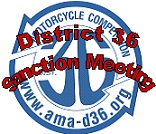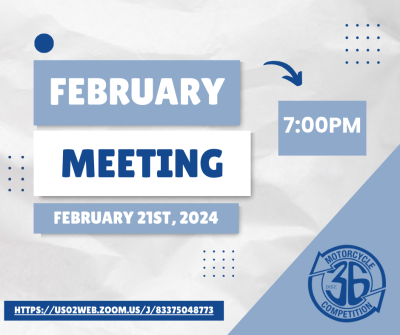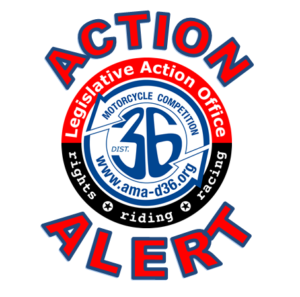 Ed Santin is always looking for opportunities to educate riders of all ages. Recently he visited a Folsom, CA school to teach students about the importance of sound testing of off highway vehicles. This week I interviewed Ed Santin, member of the District 36 Board of Directors and AMA Off Road Congressman about the most frequent questions I get asked in regards to sound testing.
Ed Santin is always looking for opportunities to educate riders of all ages. Recently he visited a Folsom, CA school to teach students about the importance of sound testing of off highway vehicles. This week I interviewed Ed Santin, member of the District 36 Board of Directors and AMA Off Road Congressman about the most frequent questions I get asked in regards to sound testing.
DAVE: Why does District 36 perform sound tests?
ED: We perform sound testing for a few reasons. First and foremost is to be good neighbors in keeping our motorcycles as quiet as we can. Sound testing limits that are recommended by the Motorcycle Industry Council are implemented into rules set by the American Motorcyclist Association and District 36 to accomplish this goal. So while a large percentage of our District 36 riders meet the limits (most are well under the limit) there are always a few that fail. For this reason our sound testing program is to make sure our racers and riders are in compliance with the established rules and as an education tool for riders that don’t understand why quiet is better for our image as responsible OHV recreational riders and racers.
District 36 developed a sound core that is given to racers that fail the sound test to insert into their mufflers to allow them to race on that day.DAVE: What is the sound limit?
ED: When we started putting pressure on AMA to lower the sound limit, the limit was set at 102 dB. 102 dB is way too loud for the new crop of 4 stroke off road race bikes, which create a low frequency sound wave. The lower frequency sound waves can travel up to twice as far as the frequency of a two stroke with the same decibel output.
You never know who lives near where you ride and can shut down your favorite spot in a heart beat. After additional support by District 36, AMA lowered the allowed decibels to 99 dB. While working with the exhaust manufacturers, the AMA agreed with a lower limit. ( note because of test conditions a 1.5 dB + or – is allowed )
A reduction from 102 decibels to 96 decibels is approximately a 50% reduction to the human ear.DAVE: How do we sound test?
ED: The test we use has been around for about 30 years. The test by the Society of Automotive Engineers is called SAE J1287 for off road motorcycle and quad testing. The AMA Congress, in collaboration with exhaust manufacturers, developed a list of test RPMS to speed up the time to test a vehicle. A sound meter is placed 20 inches to the rear of the exhaust and samples are taken at various RPMS.
AMA sound limits are 96 dba for 2-strokes and 94 dba for 4-strokes (pre-race). Ref: 2014 AMA Racing rulebook; Appendix 6.2; page 192. District 36 sound limit is 96 dba (same for 2 & 4 strokes) following California State Law. Ref: District 36 2014 Operations Manual; Section 6; Equipment, rule 6.2DAVE: Is a louder bike a faster bike?
ED: When a racer argues that he needs a loud bike to get the most power for racing I ask him If I can wire his throttle wide open before the start and he will get max power . Same concept but the rider who’s bike gets the most traction and can keep power on more than his buddies will go the fastest .
DAVE: How often should you re-pack an exhaust?
ED: Both 2 stroke and 4 stroke race bikes need to be re-packed. On the 2 stroke, carbon and oil start to clog the screen core and the sound slowly creeps up over time. On the 4 stroke, the packing tends to break down over time. So it is important to service a muffler at least every race season. Some mufflers may last longer, for example, the FMF Q brand mufflers last way longer between services than the FMF 4.1 mufflers that are designed for motocross with more frequent servicing.

Dave Wright is a District 36 Committeeman and AMA Member from Livermore, California.
Additional information on vehicle noise control and education:
US Forest Service Stationary Sound Test
www.fs.fed.us/t-d/programs/fire/spark_arrester_guides/_assets/OHV209-308Blue.pdf
OHV Sound Regulations
ohv.parks.ca.gov/?page_id=23037
Sound Advice From the American Motorcycle Association








